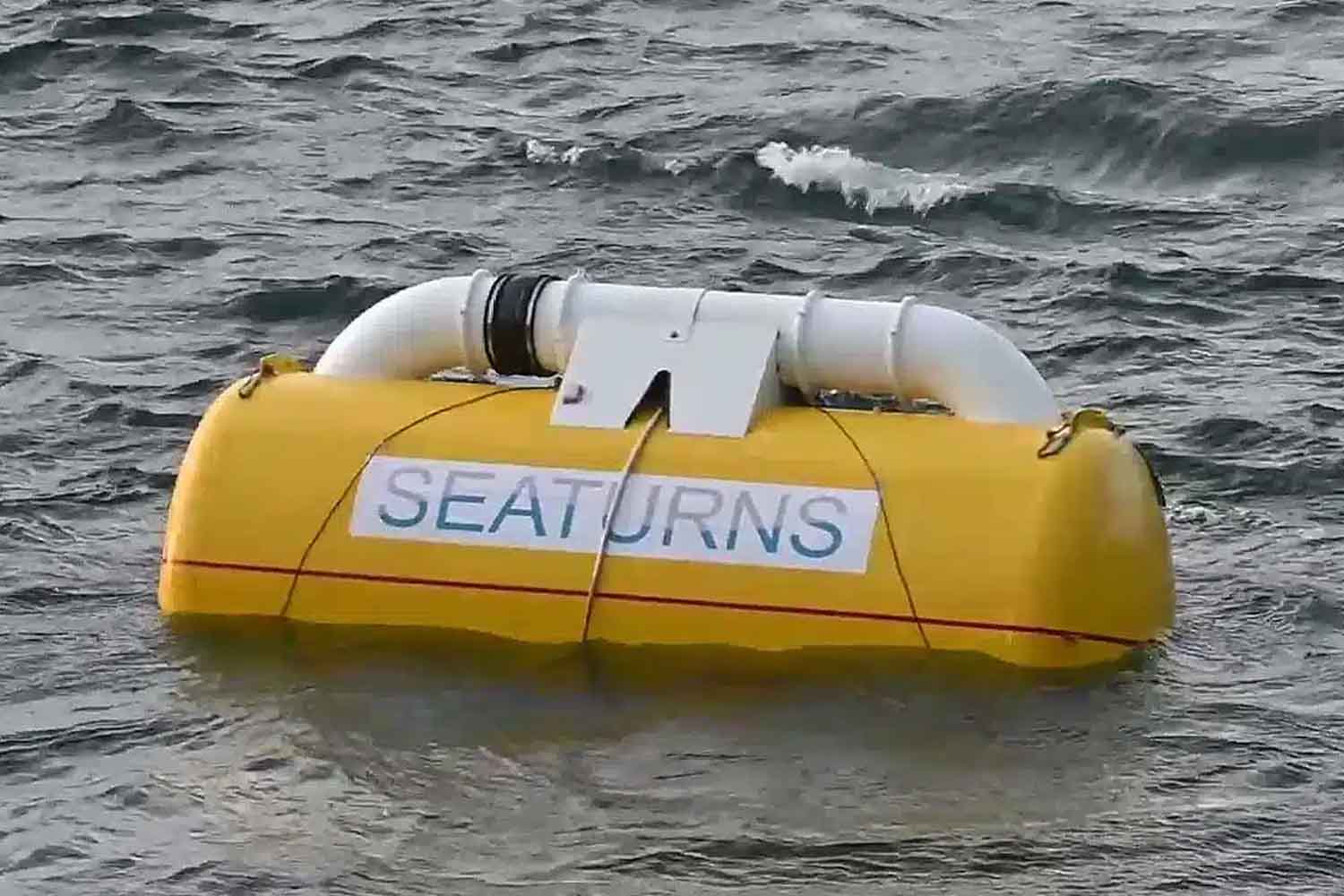After 16 months of sea trials, Seaturns demonstrates the effectiveness of its houlomotor flotation system: a system resistant to storms and marine organisms that aims to revolutionize the production of renewable energy from waves by 2030

©Seaturns
After 16 months of testing at Brest Bay, the cylindrical floater designed by French company Seaturns has proven it can generate electricity from wave energy — while surviving foul weather and sea-life biofouling. It’s a promising step toward wave energy, but the road to mass deployment is still long.
Wave power is overshadowed by solar and wind, but the World Energy Council (WEC) thinks it’s a source of enormous unrealized potential — as much as 10% of the world’s electricity demands. Technologies are in hot pursuit to capture this energy, from oscillating foams to floating chains. Seaturns, meanwhile, is banking on another: a cylindrical floating buoy that harnesses wave motion to produce electricity.
The prototype has been field-tested for more than a year in collaboration with Ifremer, France’s oceanographic research institute, to evaluate the stability, effectiveness, and durability of the device. And the verdict? Promising — though with some still-unanswered questions.
A floater that resists storms and sea growth
Throughout the test period, the device was subjected to extreme conditions — including storm Ciaran, which battered Brittany with strong winds. The floater “had good stability and produced more electricity when the waves were high,” Seaturns’ director of foresight and innovation, Gabriel Canteins, said.
And how about sea growth, like shellfish and algae? No issue so far, says Ifremer engineer Martin Träsch:
“The presence of marine organisms on the mooring lines and underwater equipment did not affect the operation of the device.”
Still, these were tests on a smaller-scale model — additional testing needs to be done before this can be called a game-changer for renewable energy.
The next step? Bigger prototype, more advanced tests
Following are these initial test results, Seaturns has a larger model in the works — 47.5 feet long, 24.6 feet tall, and 92,600 pounds. In July, it will be installed off Saint-Nazaire to test the technology at industrial scale.
If all goes according to schedule, the company is aiming to deploy pilot wave farms between 2026 and 2029, with fleets of ten devices. The ultimate goal? To have the system on the market by 2030, aimed at remote islands and industrial locations — including green hydrogen production plants.
But turning that vision into reality will cost in the neighborhood of $2.6 million and the participation of industrial actors. It won’t be easy, but if wave energy is ever to be anything other than an intellectual curiosity, now is the time to move.
Source: Seaturns
